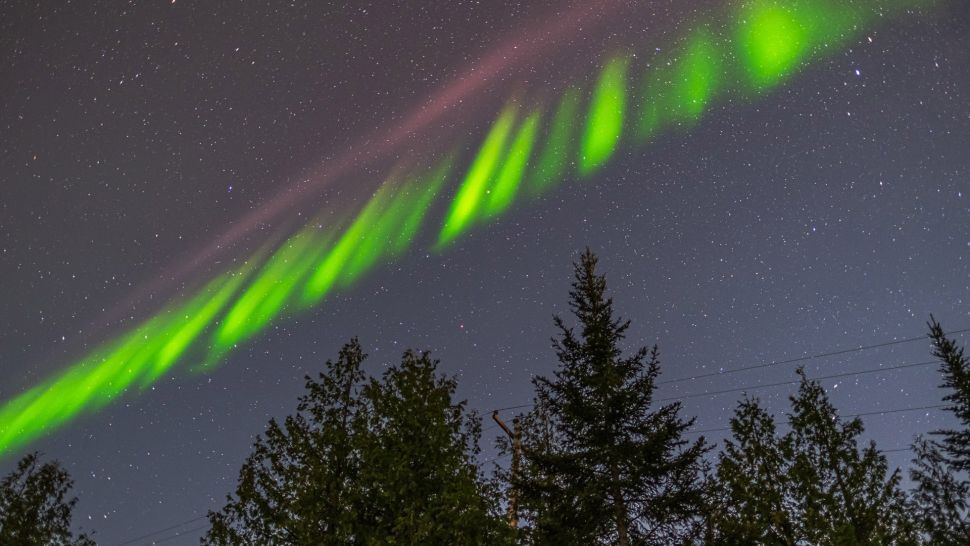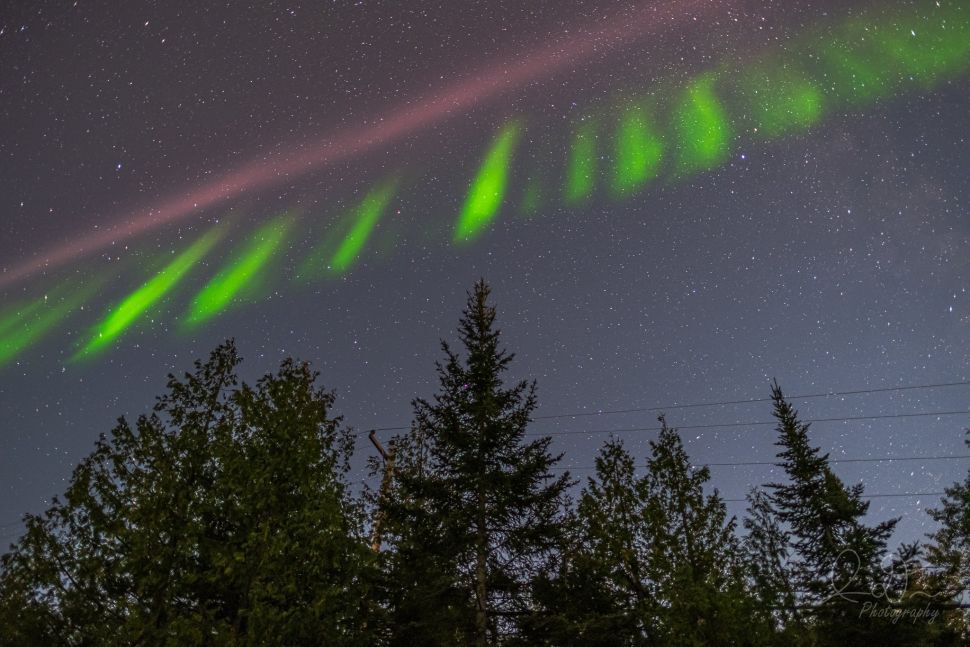8.09.2022
STEVE may be just the strangest natural phenomenon you can see in the sky.

The Strong Thermal Emission Velocity Enhancement (STEVE), an unusual form of aurora borealis, photographed on September 5, 2022, above the Keweenaw Peninsula in Upper Michigan. (Image credit: Isaac Diener)
A Michigan-based sky photographer got an unexpected treat last night when an aurora-like ribbon of glowing stripes paraded just above his head.
The ribbon was caused by the phenomenon known as STEVE (for Strong Thermal Emission Velocity Enhancement), a rare type of atmospheric glow similar to polar lights, which can be triggered when a stream of solar plasma interacts with Earth's atmosphere and magnetosphere.
STEVE, first described in 2016 by skywatchers in Canada, can occur farther away from the poles than an aurora and is far less common.
For Isaac Diener, an atmospheric photographer based on the Keweenaw Peninsula in Upper Michigan, the STEVE on Monday (Sept. 5), was only the second he has seen so clearly in the seven years since he started observing auroras.
"You can't predict when it's gonna happen," Diener told Space.com in an email. "It appears out of nowhere."
Diener, who took up photography to help distract him from a chronic pain condition, had a prolific night on Monday when conventional auroras also showed up above Eagle Harbor on the Keweenaw Peninsula in what was the third night of colorful aurora displays in a row.
Diener said he uses the same equipment and settings for his shots of STEVE as he uses to take his aurora images.
"I use a Fujifilm XT-3. And the lens I use is a 16mm lens," Diener wrote. "Settings I used on those STEVE pics are Aperture 1.4, 12 seconds, ISO 800."
Aurora sightings on previous nights came from several regions in Canada and the northern U.S. including Yellowstone National Park, according to Space

The Strong Thermal Emission Velocity Enhancement (STEVE) phenomenon captured by Michigan-based photographer Isaac Diener. (Image credit: Isaac Diener
The current aurora displays have been fed by a coronal mass ejection, a burst of charged particles from the region of the sun's upper atmosphere known as the corona, released by the star on Friday (Sept. 2). The interaction of the material from the sun with Earth's magnetic field triggered a moderate geomagnetic storm, which was further bolstered by an increased flow of solar wind from an opening in the sun's magnetic field.
The U.K. space weather forecaster Met Office (opens in new tab)predicts increased auroral activity farther away from the poles again on Tuesday evening (Sept. 6).
Quelle: SC
